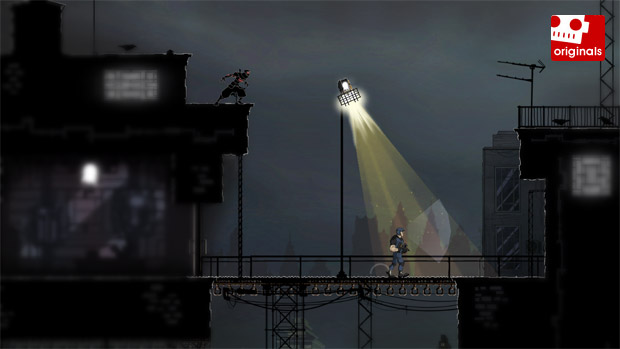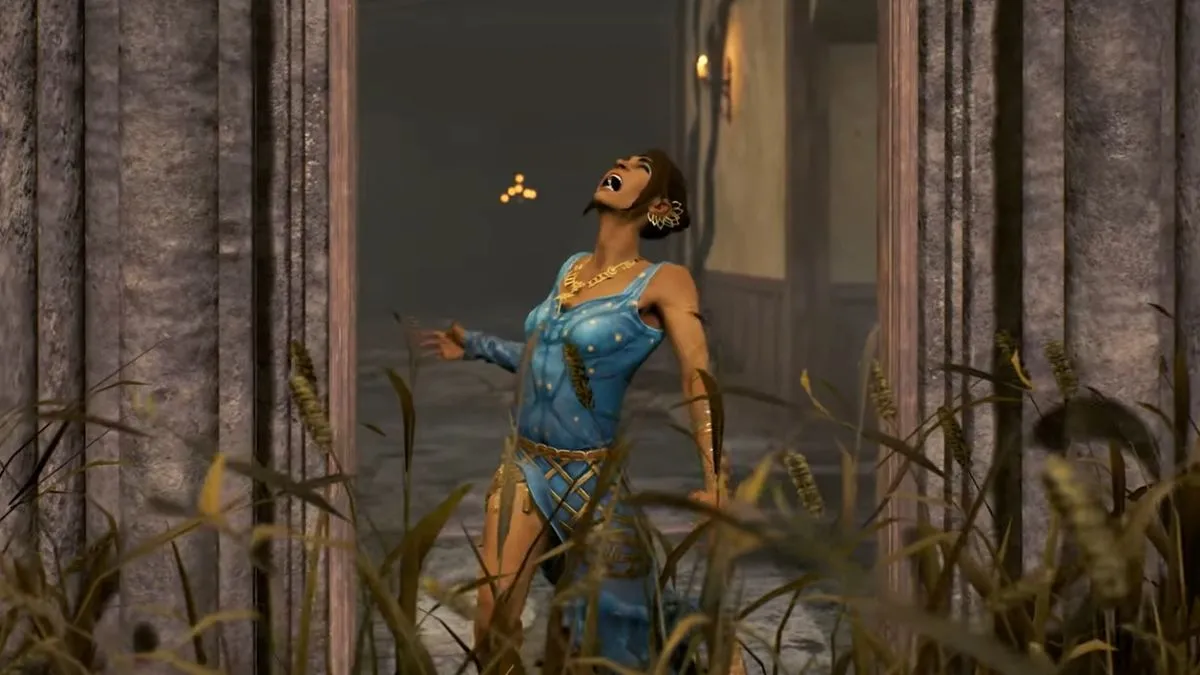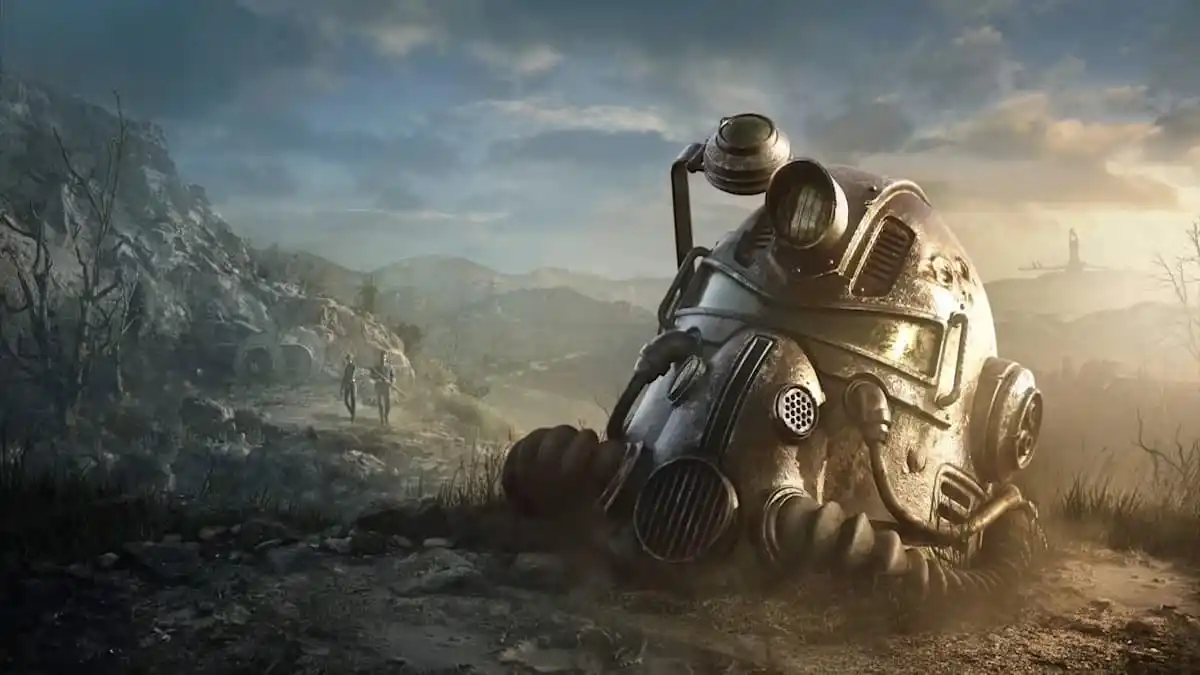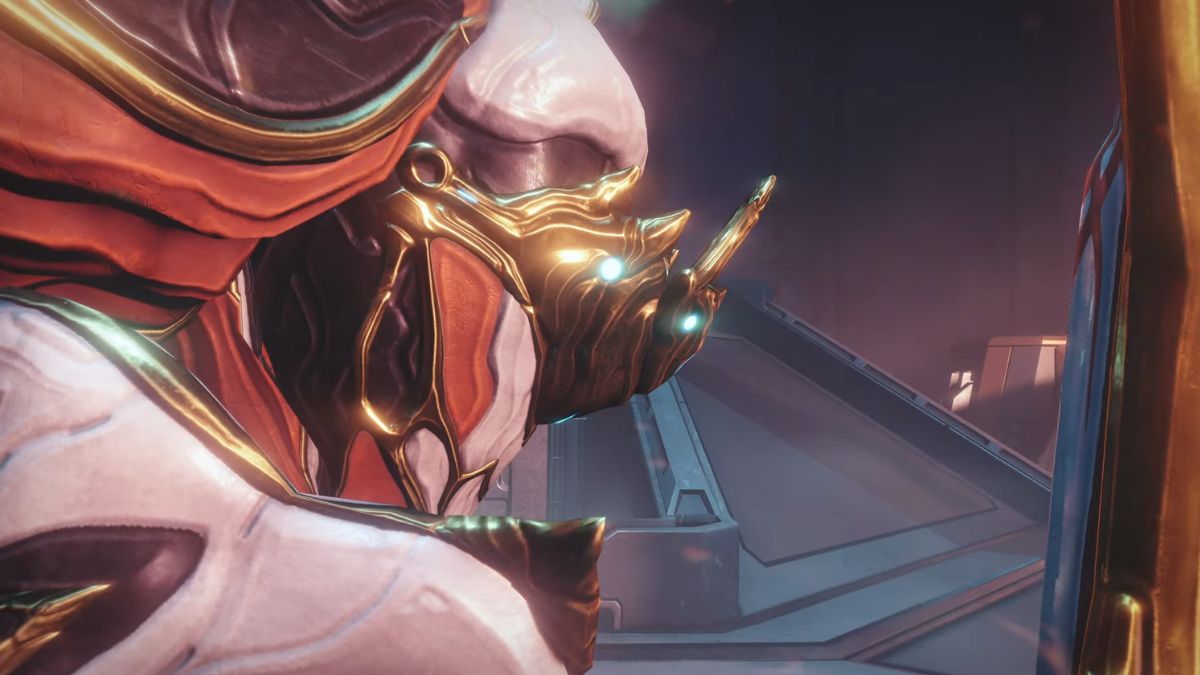I’ve always had a complicated relationship with stealth games. On the one hand, I love sneaking around and plotting out how I’m going to take out every enemy in a given room. On the other, I get frustrated easily when a game has very specific goals in mind for me and I can’t really deviate from the norm without ruining the playthrough. This is why I love the more action-oriented stealth series, such as Deus Ex or Assassin’s Creed, and why I shy away from the Hitman series and others that force too much trial and error.
Recently, I had the chance to sit down at a coffee shop with Nels Anderson, the lead designer of Klei Entertainment’s upcoming Mark of the Ninja, and get an understanding of not only how the game will bring stealth into a two-dimensional world, but also how it will engage players who may find hardcore stealth games difficult to play because of their lack of player cues.
From the interview, I gleaned that Mark of the Ninja may be the kind of stealth game that introduces a whole new audience to the genre without compromising what makes the concept of stealth fun.

Destructoid: So I’ve seen a few preview trailers for Mark of the Ninja and from what I can tell, it’s stealth game with a sort of Assassin’s Creed vibe set in a two-dimensional environment. Where did the idea for this come from?
Nels Anderson: Well, 2D stealth games — they don’t really exist, right? There are like, maybe three others ever. Only one of which even existed when we started [Mark of the] Ninja. So, we had to do a lot, a lot, a lot of design work to just figure out how to do this stuff, because, what’s the fundamental hiding action of a 3D stealth game? “Like, oh a guy is coming my way, I’m going to go hide in a corner.” Except in 2D, of course, you don’t have any corners.
Ha, yeah exactly.
So for me, the initial design process was really about looking at 3D stealth games — the kind of games that I love — and then deconstructing them almost, like figuring out why they made the decisions they did, and then pulling that up a level, and then translating that back down to 2D. A lot of these games are about control of space — where is the space that I have access to and am affected in versus the space that’s controlled by the guards, by their control paths, or vision or whatever. So it was kind of like, “How do we do that in 2D instead?” So it just ended up being a lot of iteration, experimentation, “Oh look, a thing doesn’t work!” Just turning that over and over again until we finally got the thing pointed in the right direction.

In the preview trailer, I noticed one of the big things you do for example is use a grappling hook to get out of the way…
Right. So one of the main stealth “things” — because you don’t have stuff on the same plane to break up line of sight (no corners) — one of the ways we got at good stealthiness was giving the player’s ninja a lot more movement abilities than the other agents, so things like the grappling hook where I can do very precise point-to-point movement. You can climb on the walls, you can climb on the ceilings, all that kind of stuff. You can’t break line of sight by, say geometry; we can get you out of line of sight instead by you being way more navigable than the enemies are.
Right. Kind of on that same note I noticed light and shadow came into play in the trailer — how much does that affect gameplay?
Yeah, that comes into play as well. Like I said, I like stealth games a lot. But, I also understand how they can be inaccessible for some folks because a lot of those core stealth elements that you really need to understand to effectively play the game — they’re all kind of opaque. It’s like, “I’m going to make a noise … is that guy over there going to hear me?” You just try it and then, ope, he does, and then he shoots you in the face.

Yeah, it’s a lot of trial and error at times …
Even with light and darkness, it ends up just being some HUD element, right? Like, there’s a light jam or some kind of meter or whatever. And that’s fine, that works, but kind of because the game is in 2D, it’s already a little more abstract. You’re not embodied in the character if it’s first-person or even third-person 3D. So we can put things in the world that may be a little more abstract without it seeming like this exogenous element that’s really artificial.
So things like light and darkness, for example: we wanted to make it very very explicit when you’re hidden and when you’re not. Whenever you’re in darkness, the whole character’s build is completely different so he’s mainly black with a few red highlights and a white outline all around him. In light, you can see all the dark blues in his costume, there’s no white outline, you can see the flesh tones, so it’s really really obvious.
We did the same thing with all the noise systems in the game — that’s a big part of the enemy’s perception model. They have what they can see, but also what they can hear. Visualizing what someone can hear, which is a weird thing to think about, is tricky, right? Most games don’t bother, or like, there will be a “Ring!” in the world or something. We wanted to make it really really explicit, so that any time a noise is made in the game that the enemies can hear, we literally put an effect on the screen that’s this big blue expanding ring that goes out the distance that’s how far the noise is going to travel. So you break a light, this thing comes out of it …

So it’s like more of a visualization then. I see how the two-dimensional aspect of it makes it so it’s much more of that kind of visualization rather than relying (strictly) on spatial aspects. That sounds really interesting, like a nice twist on the formula.
Right. Because it’s in 2D … I don’t know how you could visualize that in 3D, it’d be like a big, weird dome or something. Anyhow, because it’s more abstract you have a little more space to play around with there. Part of the reason I like stealth games is that you can play very intentionally. That’s what those games are about. Fundamentally, you’re undetected and the world is just kind of running. It’s up to you to poke and perturb it as you see fit. Which means you end up formulating plans, “I’m gonna go over here, then this guy is going to react and start walking this way, so then I can go over because now he’s over there, blah blah blah.” But to get to that point, you have to have a pretty good understanding of how all the systems of the game are working.
So it’s kind of like, let’s just get people to that as quickly as we can — not to make the game easy, but we wanted to make an understanding of those core fundamental stealth system just a tool you have at your disposal along with the grappling hooks and smoke bombs and stuff like that. So it’s like, these are things I can use to play and to solve these problems in ways I personally find interesting. That was a major design objective where we didn’t want to make the game seem like puzzles where you have to find the “one” solution — the only solution that works. It was very very edifying because we had to playtest the everliving hell out of this. We did more playtesting on this — by order of magnitude — than any other game we’ve made ever. Which is good, but it was edifying near the end, when one of my buddies was playing it; he’s not a developer but just a good friend of mine who plays a goodly amount of games. When he played it he was like, “When I finished that bit, it felt like there were lots of other things I could’ve done.”
So, hopefully there are lots of other people who feel that way because that was sort of the goal. It’s like, “Here are these tools you have your disposal. Use them as you wish.”
It seems like Dishonored is coming at that from kind of a similar point. It seems like Harvey [Smith] and Raph [Colantonio] and I come from a similar place — really intentional play, player empowerment, and all of that. “Here’s how stuff works. Use it as you see fit.”

So then, what is learning curve as far as level progression goes? Is it going to be pretty quickly that you’re given a lot of tools, or … ?
It’s definitely not the case that two levels in you’ve got everything. Things get more and more doled out. From the first two or three levels, you get the core things you’re going to get. The way we approached the game, there aren’t like explicit easy, medium and hard settings. When all of the enemies die in one hit because you’re sneaking up and stabbing them, you can’t just give them more hit points, it doesn’t work, right? So instead, what we ended up doing is that every level has three sets of explicit optional goals. They’re totally optional but they kind of encourage you to experiment with other mechanics systems in the game that you might not come into if you’re just playing it straight …
So what’s an example of these kinds of optional goals?
One thing might be “Get from point A in this level to point B without ever breaking a light.” Other ones are like “Find a way to terrify this guard using this particular item.”
Oh I see, so those kind of specific stealth goals …
Yes. Some of them are broadly, “Any time in the level, do this” while others are more specifically “in this chunk of a level, do a thing.”
So those are what we call the “Seals.” There are also … every level has three hidden scrolls … The game does have explicit levels with a start and end point, it’s not like a full, open, totally connected Metroidvania thing — but there is a good amount of branching and diversity in the paths within any particular level, sort of to reward being explorative …
Explora-tative? Exploring …
Uh … (laughs)
To do more exploration, every level has three of these hidden scrolls in it which kind of tell some of the backstory in an audio log sort of way. Except they’re all written in haiku, which I think is totally awesome. And then every level has point-scoring tiers, “For one star …” so to speak, this many points then that many points, etc.

Even in designing that, I wanted to make sure there wasn’t a dominant play style in terms of how the game rates your performance. Because that’s basically what points do no matter how you gussy it up or change it. When the game gives you points for doing a thing, that’s basically the game saying you did the “right thing.” I thought it very important that we didn’t bias the game toward one particular play style or another. So whenever you stealth kill an enemy, you receive an amount of points but by the end of the level, for whatever enemy you didn’t kill you could potentially receive a similar amount of points. You aren’t penalized for trying to play the game a single way.
It ends up being, “Approach this thing in the way you find it interesting …” not “Do it this way because that’s the way we point you to …”
Right, so then what is the main storyline? I haven’t really …
Yeah, we haven’t been talking about the story a lot just because mechanically there’s so much to explain up to this point, but we definitely want to talk about it from this point going forward. The high-level is you’re part of a ninja clan that has survived until the modern day. Obviously back during Japan’s warring states period ninjas really existed but after that they sort of … they went back to farming or whatever.
We had this notion that there was one clan that survived and the did it because they found this strange flower. And what this flower does is, it can be ground up and made into tattoo ink. And whenever someone receives tattoos they get strange powers. It’s nothing like ninja magic supernatural powers, more like height of human possibility — like you’re an Olympic athlete in fifteen events. But what they also unfortunately discovered is that anyone who receives these tattoos is also slowly driven insane.

So they end up ritualizing this so someone only receives these tattoos in times of great crisis, like when the clan’s very survival is threatened. And then after the clan’s survival is assured, whatever champion is selected is asked to ritually kill themselves to ensure they don’t become a danger to the clan.
Of course, the game opens with you — the player character — being the one selected to receive the tattoos because the clan is facing those times of crisis. So that’s kind of the narrative thrust that carries through the game.
So will that play into the story itself, like as far as when you get further in the levels will the tattoos sort of affect you at all, or can you talk about that …?
Obviously, I don’t want to get into pure spoiler territory, but we very intentionally made the decisions we did with respect to all of that stuff. It’s not like just a throw-away, “This in a cut scene!” sort of thing.
It certainly plays to … games like Shank and Shank 2 are super pulp, they’re like a Rodriguez/Grindhouse action game, which they’re totally what they’re supposed to be, but with this, we wanted to have something still very stylized but with a little more dramatic heft.
With the mechanics and game dynamics and narrative and the tone, all that stuff fit together very nicely. That core power dynamic in stealth games is about this interplay between strength and weakness. When I’m in my element, I’m strong, I’m powerful — but when I’m not, I’m also very vulnerable and exposed. That’s what that whole tattoos thing are about; it gives you all these abilities, but ultimately at this great, terminal cost. So it’s like, let’s make sure all this stuff points in this good, cohesive direction.
[Mark of the Ninja comes out on Xbox Live Arcade on September 7 and may possibly later arrive on PC.]




